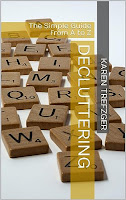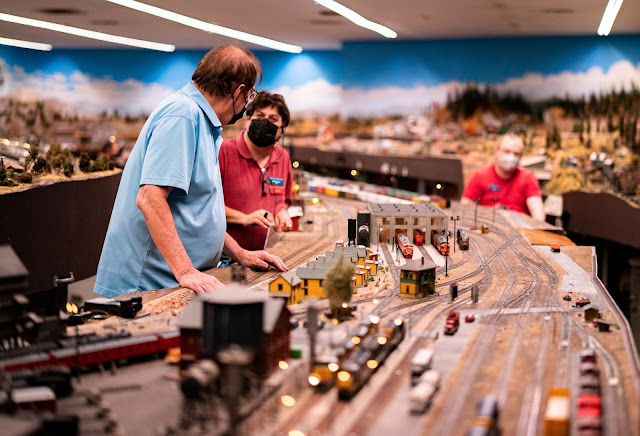Enjoy the Rewards of a 15-Day Declutter Challenge
Whether you're new to minimalism or not, my 15-day challenge will help you create a calmer, more spacious and inviting home.
Contrary to popular belief, minimalism is not just about the number of things you own. Minimalism starts in your mind. It's the balance between too much and too little – not the "more is always better" mindset of our culture, but probably not "monk in a cave" austerity either.
It's easy to start. The challenge is to take consistent action as you make decisions about your belongings. You'll begin to see immediate benefits:
- more space
- easier cleaning
- simpler routines
- straightforward access to the things you use and love
Your goals
For this project to succeed, remember that your goal is not just to rearrange or reorganize the things in your home. You want to actually remove items and donate, recycle, or responsibly dispose of them.
Every day for the next 15 days, choose one area and remove 10 items. At the end of 15 days, you'll have spent time evaluating possessions in all (or most) of the areas of your home, and you'll have removed 150 things!
If you want to, work through the challenge twice to easily remove 300 (or more) unused, unloved things from your home in just one month.
15 days, 15 areas, 150 items decluttered
1. Entryway
No one enjoys being greeted with a mess or having to wade through it as they depart, yet the entryway can be a magnet for clutter. This sets the tone for your home and increases the stress of leaving for work, school, or errands.
Remove 10 things such as junk mail, door hanger ads, old newspapers, broken umbrellas, and empty delivery boxes you've been meaning to recycle. Be sure to put away useful items that tend to be discarded as you enter, such as extra shoes, jackets, hats, backpacks, etc. Don't crowd the area with too much furniture or décor.
2. Living room
Remove 10 items like old magazines, extraneous throw pillows, videos and games you don't play, décor you don't love, TV trays, or that uncomfortable chair no one sits in. Create a space that's welcoming, comfortable, and clutter-free.
3. Bookshelf
Choose 10 books to donate or sell. Focus on books you haven't read or are unlikely to re-read, including last year's bestsellers and book club choices. Make room for something new, or simply create a streamlined look.
4. Kitchen
Declutter 10 items such as duplicate utensils, unused gadgets, warped or lidless storage containers, extra travel mugs, refrigerator magnets, corporate giveaway cups, and décor that clutters the counter. Consider removing the third set of dishes. Simplify your cooking space for easier prep and cleanup.
5. Pantry
Remove 10 things such as stale spices, canned goods you bought to "stock up" but haven't used, junk food, and suspect packages lurking in dark corners. Clean the shelves, and as you return foods, group like items together so you can see how much you have. This will prevent overbuying or running out in future.
Extra credit: Declutter the refrigerator too!
6. Bedroom
Remove 10 things that don't belong in a space designed for calm and connection. This might mean old bedding, piles of throw pillows, excess décor, too much technology, or unnecessary child and/or pet paraphernalia.
7. Wardrobe
Refine your wardrobe to meet your current lifestyle, and make getting dressed easier every day. Part with 10 items of clothing such as those that don't fit, are stained or faded, or that your sister gave you when she cleared out her own closet. Consider shoes that give you blisters, dresses that make you feel frumpy, and bulky sweaters you hate.
8. Bathroom
Choose 10 items to remove, including old makeup, expired medicines, unused samples, ragged towels, and décor that makes it harder to use and clean the countertop.
9. Linen closet
Find 10 things to let go, such as extra blankets, old sheets, Grandma's quilt that never sees the light of day, or unused tablecloths.
10. Storage areas (garage, basement, attic, etc.)
These spaces are often filled with unused items. Outdated camping equipment, unneeded sports gear, old baby furniture, and unopened boxes that have been moved from house to house are all candidates for decluttering.
11. Home office
Remove 10 things, starting with the dead printer, obsolete computers, old papers, unused stationery, last year's appointment calendar, and the pile of rubber bands.
12. Craft room
Many of us can find more than 10 items here, including dried-out markers, long-neglected hobby supplies, and half-finished projects we no longer care to work on. Remove anything that makes you feel guilty and keeps you from creating something new.
13. Toy room
Discard 10 things, such as broken toys, torn books, and freebie junk. Remove toys your child has outgrown or just doesn't play with. Make it easier for him to find what he wants and put it away again.
14. Coat closet
Remove 10 items like unneeded coats, orphan gloves, unworn hats and scarves, broken goggles, etc. Weed out extra luggage too.
15. Hidden spaces (junk drawer, under the bed, etc.)
We all have at least one of these spaces. Find 10 items to part with, such as unused keys and chargers, old receipts, dead batteries, or costume jewelry that's no longer your style. Do you use all of the flashlights, scissors, notepads, and rolls of tape you've accumulated?
Don't let clutter hide on your computer either – discard blurry photos, junk email, and bookmarks for websites you never visit anymore.
More than decluttering
This 15-day challenge does more than help you find and physically remove 150 items from your home – although that alone is a fantastic result! It also lets you become more thoughtful and intentional about what you own. As you change your relationship to your belongings, it will be easier to maintain a less-cluttered lifestyle.
Start today! You've got nothing to lose but clutter.
A beautiful, spacious, uncluttered home may seem like an impossible dream, but it doesn't have to be.
My pocket-size A to Z guide, Decluttering,* breaks the process into manageable tasks, making it easier to achieve the larger, cleaner, more organized home you're longing for. Here's the cheat-sheet you've needed to keep you on track.
Contrary to popular belief, minimalism is not just about the number of things you own. Minimalism starts in your mind. It's the balance between too much and too little – not the "more is always better" mindset of our culture, but probably not "monk in a cave" austerity either.
Minimalism seeks the Goldilocks-approved point of
- the right-size house
- the right-size car
- the right-size wardrobe, schedule, vacation, and more...
If you're interested in a balanced life that promises more satisfaction with less stuff, my book Minimalism 1-2-3 will introduce you to some foundational concepts. You can start small, investigate the basics, and discover what's right for you.
* This blog is reader-supported. If you buy through my links, I may earn a small commission.








Comments
Post a Comment